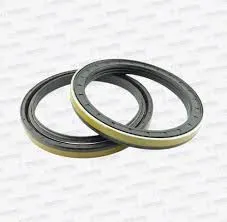9 月 . 14, 2024 10:40 Back to list
high temperature oil seal
High Temperature Oil Seals Ensuring Reliability in Extreme Conditions
High temperature oil seals play a critical role in various industrial applications, particularly where machinery operates in environments subject to elevated temperatures. These seals are designed to maintain the integrity of lubricants while preventing the ingress of contaminants under challenging conditions. As industries evolve and equipment increasingly operates at higher temperatures, the importance of selecting the right oil seal cannot be overstated.
The primary function of an oil seal is to retain lubrication while preventing leaks. In high temperature applications, conventional seals may fail due to the thermal stress imposed by heat. High temperature oil seals are engineered with advanced materials capable of withstanding extreme heat without degrading. Common materials used include fluoroelastomers (FKM), silicone rubber, and polyurethane, all of which demonstrate superior thermal stability and resistance to harsh fluids.
One of the significant challenges faced by engineers is the selection of an oil seal that can withstand not only high temperatures but also chemical exposure. In many industries, the lubricants used are often blended with additives that can be corrosive or abrasive. High temperature oil seals must be compatible with these substances to ensure long-lasting performance. For instance, fluoroelastomers excel in environments where chemical resistance is a priority, making them a popular choice for automotive and aerospace applications.
Another critical aspect of high temperature oil seals is their design. Effective sealing relies on a variety of factors, including lip design, material hardness, and the sealing mechanism. A well-designed lip can adapt to dynamic changes in temperature and pressure, ensuring a tight seal throughout the operation. Additionally, the resilience of the seal material must be considered, as high temperatures can lead to a reduction in the material's ability to compress and seal effectively.
high temperature oil seal

The installation of high temperature oil seals also demands careful attention. Correct installation is paramount to avoid premature seal failure. Misalignment, improper seating, and contamination during installation can lead to performance issues, including leakage and reduced lifespan. Therefore, proper training and guidelines for mechanics and engineers are essential when working with these components.
Furthermore, maintenance plays a crucial role in the longevity of high temperature oil seals. Regular inspections can help identify potential issues before they escalate into failures. By monitoring the condition of seals, companies can schedule timely replacements, thereby minimizing downtime and maintenance costs.
As industries continue to push the boundaries of performance and efficiency, the demand for high performance components like high temperature oil seals will only increase. Innovations in materials science and seal design are expected to further enhance the capabilities of these critical components, ensuring that they can meet the rigorous demands of modern machinery.
In conclusion, high temperature oil seals are indispensable in maintaining the reliability and efficiency of equipment operating under extreme conditions. With proper selection, installation, and maintenance, these seals provide essential protection against leaks and contaminants, significantly extending the operational life of machinery and reducing overall maintenance costs. Investing in high-quality oil seals is not just a choice; it is a necessity for industries aiming for operational excellence in today's heat-intensive environments.